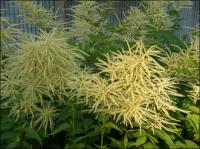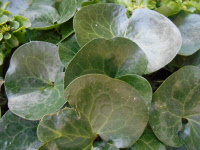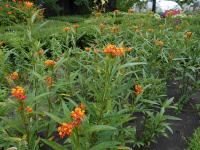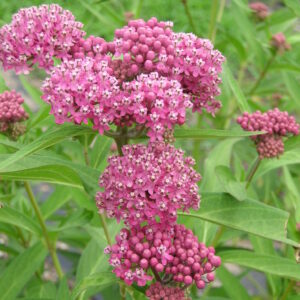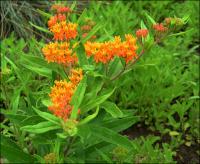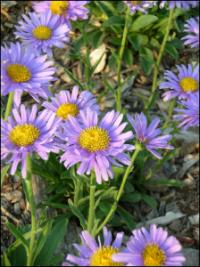Shop
Showing 89–96 of 788 results
-
Aruncus dioicus syn. Spiraea aruncus, Aruncus sylvester Goat’s beard Z 3-7
Bold cream-colored arching plumes in early to mid-summer, light up shady corners.
Bold cream-colored arching plumes in early to mid-summer, light up shady corners.
Size: 5-6' x 4'
Care: part to full shade, moist to moist well-drained soil
Native: Europe, E. Siberia, E. North America
Awards: Royal Horticultural Society Award of Garden MeritGrown by Tradescant in England by 1633. Sold in America’s 1st plant catalog, Bartram’s Broadside, 1783. In 1870 William Robinson recommended growing the plant for naturalization. Robinson described it as: “beautiful in foliage and habit as well as flower…flowers are freely produced in summer in large gracefully-drooping plumes.”
-
Asarum canadense syn. Hexastylis canadense Wild ginger Z 3-7
Concealed brown bell-shaped flowers with flared tips hide under this groundcover's crinkled, lacquered leaves.
Concealed brown bell-shaped flowers with flared tips hide under this groundcover’s lacquered leaves.
Size: 6" x 6" spreading
Care: part shade to shade, moist well-drained to well-drained soil
Native: Canada to So. Carolina, Wisconsin nativeNative Americans used Wild ginger for such diverse purposes as flavoring food, curing heart palpitations, induce menstrual cycles, cure “the bite of the serpent,” mend broken bones, as a general tonic, a tea and lure catfish. Winnebago tenderized raccoon meat with this. Colonists used the plant to break fever and stimulate the appetite. Studies in the last 50 years have showed that the roots contain antibiotics BUT also can damage kidneys and are possibly carcinogenic.
-
Asarum europaeum syn. Hexastylis europaeum European snakeroot, Wild ginger Z 4-9
Glossy, polished, round leaves with purplish, sepia-toned bell-like flowers hidden by leaves.
OUT OF STOCK – EMAIL FOR AVAILABILITY
Glossy, polished, round leaves with purplish, sepia-toned bell-like flowers hidden by leaves.
Size: 4-6” x 12” slow spreader
Care: shade to part shade in moist to moist well-drained acidic soil
Native: Europe
Awards: Elisabeth Carey Miller Garden Great Plant Pick & England’s Royal Horticultural Society Award of Merit.Identified by Dioscordies in De Materica Medica for medicinal use around 70 A.D. According to Dioscorides in Roman times this plant cured ailments of the eyes, ears, stomach, mind, and the head. Grown in the Eichstätt Garden, the garden of Johann Konrad von Gemmingen, prince bishop of Eichstätt in Bavaria, c. 1600. Gerard (1633) reported that this Wild ginger prevented increase of hard swelling cankers by topical application. Powdered root mixed with wine cured sciatica, gout, dropsy, and ague. The name Asarum comes from Greek phrase “to adorn” meaning it needs adornment.
-
Asclepias curassavica Bloodflower or scarlet milkweed Z 9-11 Annual in colder areas
Small scarlet red and orange umbels all summer and early fall
OUT OF STOCK
Asclepias curassavica grows upright and tall with spiraling lance-shaped leaves. Blooming all summer and early fall. Showy flowers, in small scarlet red and orange umbels.
Size: 24-30” x 12-24”
Care: sun to part shade in moist well-drained soil
Native: South America
Wildlife Value: Attracts Monarch butterfliesIn gardens since 1750’s.
-
Asclepias incarnata Swamp milkweed Z 3-9
Fragrant medium pink umbels, like an upside down ballerina’s skirt, July – September. One of internationally known garden designer Piet Oudolf’s 100 “MUST HAVE” plants, Gardens Illustrated 94 (2013)
Fragrant medium pink umbels, like an upside down ballerina’s skirt, July – September. One of internationally known garden designer Piet Oudolf’s 100 “MUST HAVE” plants, Gardens Illustrated 94 (2013)
Size: 3’-4’ x 2-3’
Care: Sun in moist to moist well-drained soil
Native: North America – all states except those along the Pacific Coast – Wisconsin native.
Wildlife Value: host for Monarch caterpillars, flowers are source of nectar for several butterfliesNamed after Asclepias, a Greek god of medicine. Native American groups used Swamp milkweed – Chippewa to increase their strength & the stems made into twine; Iroquois to heal navels in babies, to increase or decrease urine and to make a person strong enough to punish witches; Meskwaki to drive out tapeworms; and Menominee used it as an ingredient in food – added to deer soup & cornmeal mush. Oneida used the root to remedy asthma and whooping cough. They made thread to sew moccasins with the stems. Lakota Sioux: “The pulverized root is made into a salve which is used to treat swollen glands. The young seed pods are edible after cooking. An infusion of the roots is used to treat asthma, rheumatism, syphilis, and a weak heart.” Listed as growing in England in Philip Miller’s Gardeners’ Dictionary, 1768. Grown at America’s 1st botanic garden, Elgin Botanic Garden 1811. Pressed specimen in Emily Dickinson’s herbarium. “The downy parachutes . . . attached to each seed are six times more buoyant than cork and five times warmer than wool. Large quantities of milkweed were grown for use as stuffing in pillows and lifejackets during World War II.” USDA Natural Resources Conservation Service.
-
Asclepias tuberosa Butterfly weed, Pleurisy-root Z 4-9
Gorgeous - July - September bright orange cymes
OUT OF STOCK
Gorgeous – July – September bright orange cymes
Size: 2-3' x 12"
Care: Sun in well-drained to moist well-drained soil
Native: East and south North America, Wisconsin native
Wildlife Value: Host for Monarch caterpillars and its nectar is a favorite for 13 different butterflies: 4 Swallowtails, 2 Fritillaries, Checkered white, Spring azure, Small copper, Sachem, Monarch, and Coral and Gray hairstreaks. Attracts Ladybugs that eat many insect pests.
Awards: Great Plants for Great Plains; Perennial Plant Assn. Plant of the Year 2017.Named after Asclepias, a Greek god of medicine. Omaha Indians ate the raw root to cure bronchial and pulmonary ailments, their Shell Society was the authorized guardian of the plant, taking 4 days to dig, prepare and distribute the root. Most important medicine for Menominee Indians. The Iroquois smashed roots on legs to impart strength to runners. Navajo cured coyote bites and flu with Butterfly weed. HoChunk placed masticated root into wounds. Collected and sent to England by Rev. John Banister in colonial Virginia c. 1680. Cultivated by Jefferson. Pressed specimen in Emily Dickinson’s herbarium.
-
Asclepias verticillata Whorled milkweed Z 4-10 POISON
Fragrant flat-topped clusters of many small white flowers atop single stem surrounded by narrow, grass-like leaves. Blooms July through October.
ARCHIVED
Note: This is a plant not currently for sale. This is an archive page preserved for informational use.
Fragrant flat-topped clusters of many small white flowers atop single stem surrounded by narrow, grass-like leaves. Blooms July through October.
Size: 12-30” x 12-24” spreading
Care: sun to part shade in moist well-drained to well-drained soil
Native: all US, Wisconsin native
Wildlife Value: deer & rabbit resistant. Bees & butterflies eat nectar. Host for Monarch caterpillars.
Size: root used to induce sweating for Choctaw, Chickasaw and Creek nativesCollected by 1753. Grown at America’s 1st botanic garden, Elgin Botanic Garden 1811.
-
Aster alpinus Alpine Aster Z 5-7
Frilly little daisies, May-June, lavender, pink or white
Frilly little lavender daisies, May-June. Plant where they will be seen in the front of the garden.
Size: 6" x 12"
Care: Full sun well-drained soil.
Native: Rockies
Wildlife Value: attract butterflies
Awards: England’s Royal Horticultural Society Award of Merit.
Size: Border/Rock gardensAster means star, referring to the flower’s form. Listed in Philip Miller’s Gardeners’ Dictionary 1768: “Grows naturally upon the Alps… at the top of each stalk is one large blue flower…this flowers in June…”

